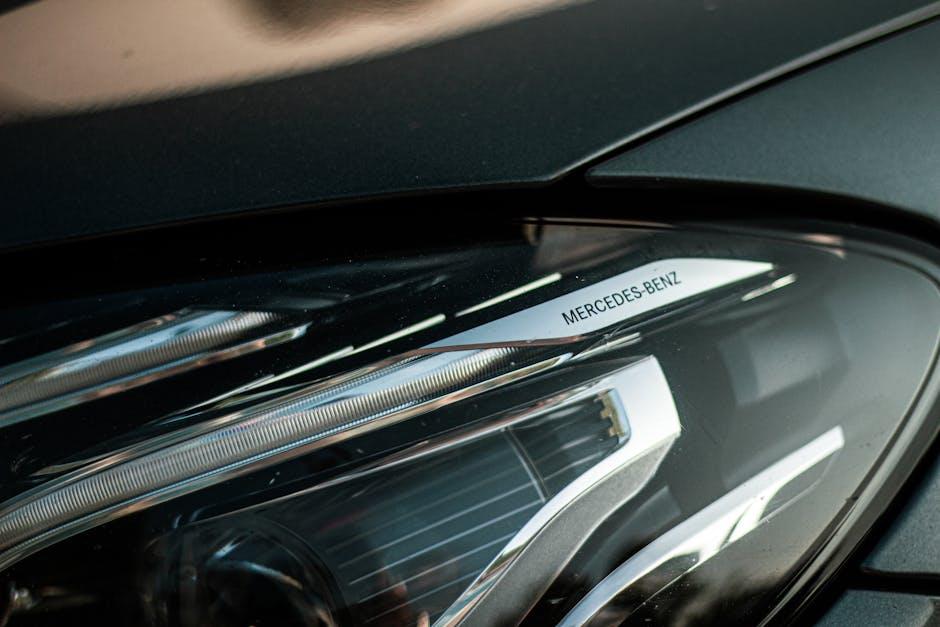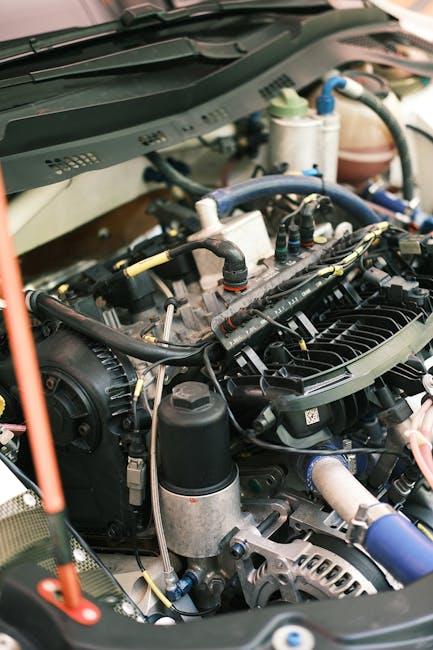Every vehicle relies on a vital powerhouse tucked beneath its hood—the battery. This silent sentinel awakens your engine with a spark, fuels your electronics, and ensures your drive starts smoothly each time. But with a myriad of options available, selecting the right battery can feel like navigating a labyrinth. Whether you drive a compact car, a rugged truck, or an electric vehicle, understanding how to choose the perfect battery is key to maintaining performance and reliability on the road. In this article, we’ll unravel the essentials of vehicle batteries, guiding you through the process so you can make an informed and confident choice tailored to your vehicle’s unique needs.
Table of Contents
- Understanding Different Battery Types and Their Vehicle Compatibility
- Assessing Your Vehicle’s Power Requirements and Usage Patterns
- Key Specifications to Look for When Selecting a Battery
- The Importance of Battery Brand Reputation and Warranty Coverage
- Tips for Proper Battery Maintenance to Extend Lifespan
- Where to Buy Quality Batteries and How to Avoid Common Pitfalls
- Q&A
- The Conclusion

Understanding Different Battery Types and Their Vehicle Compatibility
When it comes to powering your vehicle, not every battery is designed to deliver optimal performance across all types. Lead-acid batteries remain the classic choice, widely favored for their affordability and reliability in traditional gasoline and diesel cars. However, modern vehicles often demand more specialized options. For instance, Absorbent Glass Mat (AGM) batteries excel in vehicles packed with electrical accessories and start-stop technology due to their superior charge retention and vibration resistance. Meanwhile, lithium-ion batteries are revolutionizing electric and hybrid vehicles by offering lighter weight and quicker charging times, although they come with a higher price tag and specific maintenance needs.
Knowing your vehicle’s requirements ensures you select a battery that’s designed to support its unique engine and system demands. Consider these compatibility points:
- Engine type: Gasoline, diesel, hybrid, or full electric.
- Climate conditions: Extreme cold or heat can affect battery performance.
- Electrical load: Vehicles with advanced electronics may require AGM or deep-cycle batteries.
- Physical dimensions: Proper fitment in the battery tray to avoid damage.
| Battery Type | Ideal Vehicle Type | Key Benefits |
|---|---|---|
| Lead-Acid | Standard Gasoline/Diesel | Cost-effective, widely available |
| AGM | Modern cars with Start-Stop | Longer life, vibration resistant |
| Lithium-Ion | Electric/Hybrid Vehicles | Lightweight, fast charging |

Assessing Your Vehicle’s Power Requirements and Usage Patterns
Understanding how much power your vehicle demands is pivotal in selecting the ideal battery. Different vehicles, from compact cars to heavy-duty trucks, have varying electrical loads influenced by engine size, accessory usage, and onboard electronics. Begin by evaluating key factors such as the total power consumption of your car’s systems, the climate you typically drive in, and how frequently you use additional power-hungry features like heated seats, infotainment systems, or winches. This assessment helps narrow down the battery’s capacity and cold-cranking amps (CCA) necessary to keep your vehicle running smoothly under all conditions.
Next, reflect on your driving habits and daily usage patterns. Are you mostly taking short trips, or do you embark on long drives? Vehicles used frequently for short distances might require batteries with fast recharge rates to compensate for frequent starts and stops, while those on longer journeys benefit from batteries with deep cycling abilities to handle consistent load. To better visualize your needs, refer to the simple comparison below:
| Usage Pattern | Battery Feature Needed | Example Vehicle |
|---|---|---|
| Frequent Short Trips | High CCA, Fast Recharge | City Commute Cars |
| Long Distance Driving | Deep Cycle, High Capacity | Touring SUVs |
| Heavy Electrical Loads | High Reserve Capacity | Vehicles with Lots of Accessories |

Key Specifications to Look for When Selecting a Battery
When choosing a battery, understanding its capacity and dimensions is crucial. The capacity, often expressed in ampere-hours (Ah), indicates how long the battery can deliver power under standard load — a battery with insufficient capacity can leave you stranded. Equally important is the physical size; a battery must fit snugly into your vehicle’s battery tray to avoid vibrations that could shorten its lifespan. Always compare the battery’s specifications with your vehicle’s requirements documented in the owner’s manual.
Other essential specs are cold cranking amps (CCA) and reserve capacity (RC). CCA measures the battery’s ability to start your engine in cold weather, which is vital for reliability during winter. RC refers to how long a battery can sustain a minimum voltage under load without the alternator running, acting as a backup in case of alternator failure. Below is a quick reference table to help you understand these key specs:
| Specification | Description | Importance |
|---|---|---|
| Capacity (Ah) | Duration battery can supply current | Ensures power meets vehicle’s running time needs |
| Dimensions | Physical size & shape of the battery | Fits securely without damaging components |
| Cold Cranking Amps (CCA) | Power available to start engine in cold weather | Crucial for reliable winter starts |
| Reserve Capacity (RC) | Time battery can supply power if alternator fails | Provides backup power for essential systems |

The Importance of Battery Brand Reputation and Warranty Coverage
When selecting a battery, the legacy of the manufacturer carries significant weight. A reputable brand is often synonymous with reliability, ensuring you won’t be left stranded with a dead battery during critical moments. Brands with a proven track record invest heavily in quality control and cutting-edge technology, ultimately delivering a product designed to endure fluctuating temperatures, vibrations, and demanding startup conditions. Opting for a less-known or generic battery might seem budget-friendly initially, but it can lead to unexpected costs and frequent replacements.
Warranty coverage acts as a buyer’s safety net, offering peace of mind that your investment is protected. A longer and comprehensive warranty reflects the manufacturer’s confidence in their product’s durability. Pay attention to the terms—some warranties offer free replacement or pro-rated coverage, covering either parts or labor for the life of the warranty. Here’s a quick snapshot of what to look for:
- Full replacement period: Covers complete replacement within an initial timeframe (e.g., 24 months).
- Pro-rated period: Partial credit towards a new battery based on usage after the full replacement period.
- Free labor: Some brands cover installation costs under warranty.
| Warranty Feature | Benefit to You |
|---|---|
| Full Replacement Period | Quick and hassle-free battery swap |
| Pro-Rated Coverage | Cost-efficient battery renewal |
| Labor Coverage | Save on installation fees |

Tips for Proper Battery Maintenance to Extend Lifespan
Maintaining your vehicle’s battery in peak condition is essential to maximize its lifespan and ensure reliable performance. Simple habits like regularly checking the battery terminals for corrosion and keeping them clean can prevent energy loss and starting issues. It’s also important to ensure that the battery remains securely fastened, as vibrations can accelerate internal wear and reduce lifespan. Consider using a battery terminal protector spray to safeguard against rust and acid build-up, which can significantly deteriorate performance over time.
Another vital aspect is managing the charge cycle wisely. Avoid letting your battery drain completely, as deep discharges can shorten its usable life. When storing a vehicle for long periods, disconnecting the battery or using a smart battery maintainer can help maintain an optimal charge level. Below is a quick reference of maintenance tips that help keep your battery robust and ready for the road:
- Check electrical connections: Tighten loose cables and clean terminals monthly.
- Inspect water levels: Top up with distilled water if applicable.
- Limit short trips: Frequent brief drives don’t fully recharge the battery.
- Keep it cool: Avoid extreme heat exposure which accelerates deterioration.

Where to Buy Quality Batteries and How to Avoid Common Pitfalls
Finding a reliable source for automotive batteries can feel overwhelming, but focusing on reputable dealers and certified stores is your best bet. Look for authorized dealerships, well-known auto parts retailers, and recognized online platforms with good customer reviews. Shopping from these sources not only guarantees genuine products but often ensures warranties and return policies are in place. Additionally, many stores offer installation services, saving you the hassle of finding a mechanic to put in your new battery.
Beware of common pitfalls that could cost you in the long run. Avoid purchasing batteries from unverified sellers or significantly discounted offers that seem too good to be true. These might be counterfeit, refurbished, or near expiration. To assist your decision, here’s a quick comparison table showcasing typical red flags versus qualities of trustworthy purchases:
| Red Flags | Trustworthy Qualities |
|---|---|
| Unlabeled or unclear product origin | Clear branding and manufacturing details |
| No warranty or return policy | Full warranty with transparent terms |
| Excessively low price | Fair market value aligned with brand |
| Limited or negative customer feedback | Positive reviews and customer support |
Q&A
Q&A: How to Choose the Right Battery for Your Vehicle
Q1: Why is choosing the right battery important for my vehicle?
A1: Your vehicle’s battery is its electrical heart. Picking the right one ensures reliable starts, powers essential electronics, and extends the lifespan of your car’s electrical system. The wrong battery can lead to poor performance or even damage.
Q2: What key factors should I consider when selecting a battery?
A2: Start with the battery size that fits your vehicle’s tray, check the cold cranking amps (CCA) for your climate, assess reserve capacity (RC) for how long the battery can run without the engine, and verify the battery’s type—like lead-acid or AGM—to match your car’s needs.
Q3: How do I know which battery size is right for my vehicle?
A3: Battery size isn’t just about physical fit, but also terminal placement and power specs. Check your owner’s manual or current battery label for a group size number, which standardizes dimensions and terminal layout for your model.
Q4: What’s the significance of Cold Cranking Amps (CCA)?
A4: CCA measures the battery’s ability to start your vehicle in cold weather. Higher CCA numbers are essential if you live in chilly climates, ensuring your engine turns over quickly despite frosty conditions.
Q5: Should I choose a maintenance-free battery?
A5: Maintenance-free batteries require less upkeep and often have sealed designs, preventing leaks and corrosion. They’re convenient and reliable for most drivers, but regular checks are still a good habit.
Q6: Are there different types of batteries I should consider?
A6: Yes—standard flooded lead-acid batteries are common and affordable, while Absorbent Glass Mat (AGM) batteries provide better durability and performance, especially for modern vehicles with advanced electronics or start-stop systems.
Q7: How often should I replace my car battery?
A7: On average, car batteries last 3 to 5 years. Temperature extremes, driving habits, and vehicle electronics load can affect this. Keep an eye on symptoms like slow starts or the battery age to stay ahead.
Q8: Can I install a replacement battery myself?
A8: If you’re comfortable with basic tools and safety precautions, yes. Disconnect the negative terminal first, then the positive, swap the battery, and reconnect in reverse order. If unsure, professional installation ensures the job is done correctly.
Q9: What are signs that my battery is failing?
A9: Look for slow engine crank, dim headlights, a swollen battery case, or the check engine/battery warning light. Regular testing at an auto shop or with a multimeter can catch issues early.
Q10: How can I recycle my old car battery responsibly?
A10: Car batteries contain hazardous materials, so recycling is crucial. Return your old battery to the retailer, auto service center, or a designated recycling facility. This helps protect the environment and often qualifies you for a deposit refund.
Choosing the right battery for your vehicle isn’t just about grabbing the cheapest option. It’s a balance of fit, power, and longevity that keeps your drive smooth and safe every time you turn the key—or push the start button.
The Conclusion
Choosing the right battery for your vehicle isn’t just about picking the first one off the shelf—it’s about understanding your car’s unique needs and how different batteries can meet them. With the right power source under your hood, you’re not only ensuring reliable starts but also extending the life of your vehicle’s electrical system. So take the time to weigh your options, consider your driving habits, and trust the battery that’s made to keep you moving forward. After all, the journey begins with the spark you choose today.


1 Comment
e5yv6b